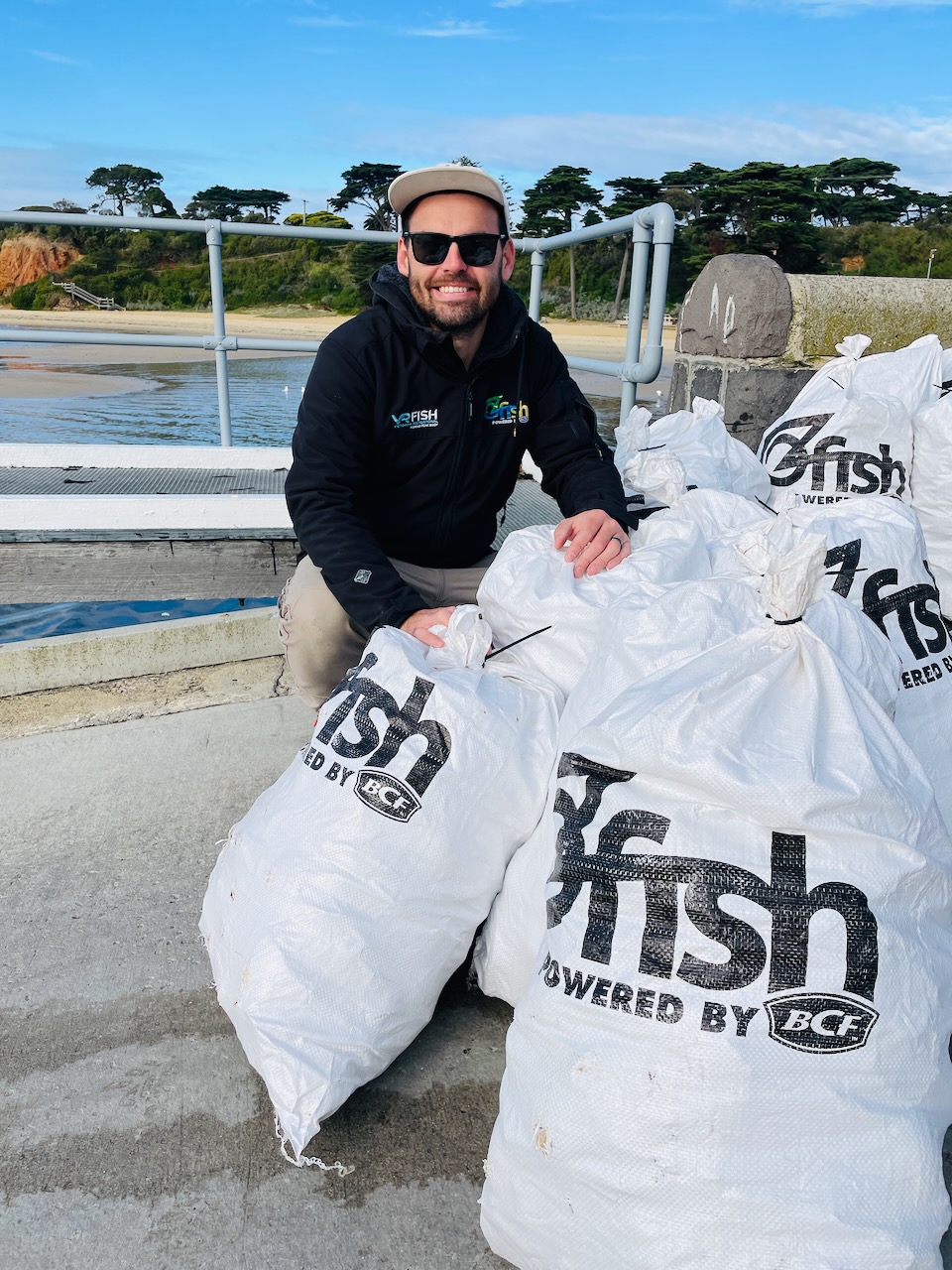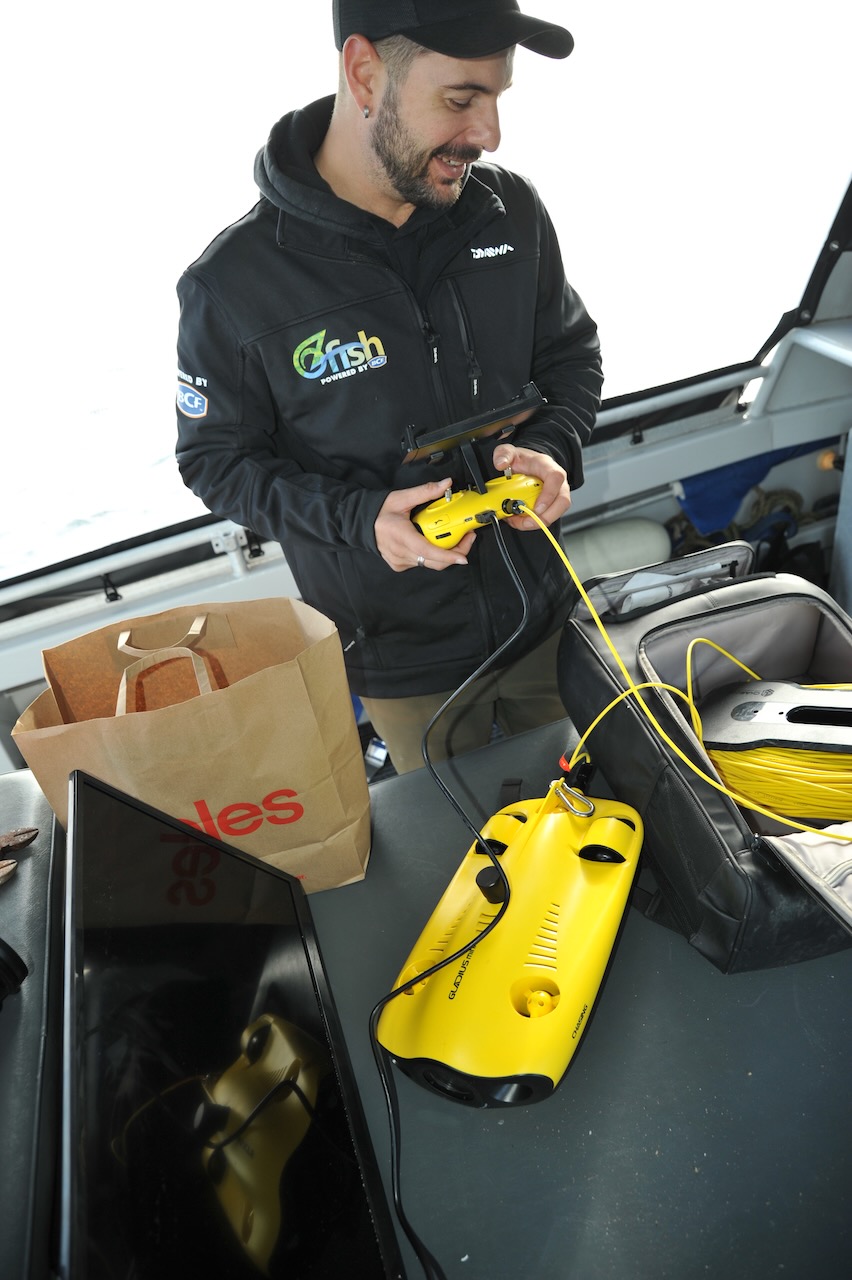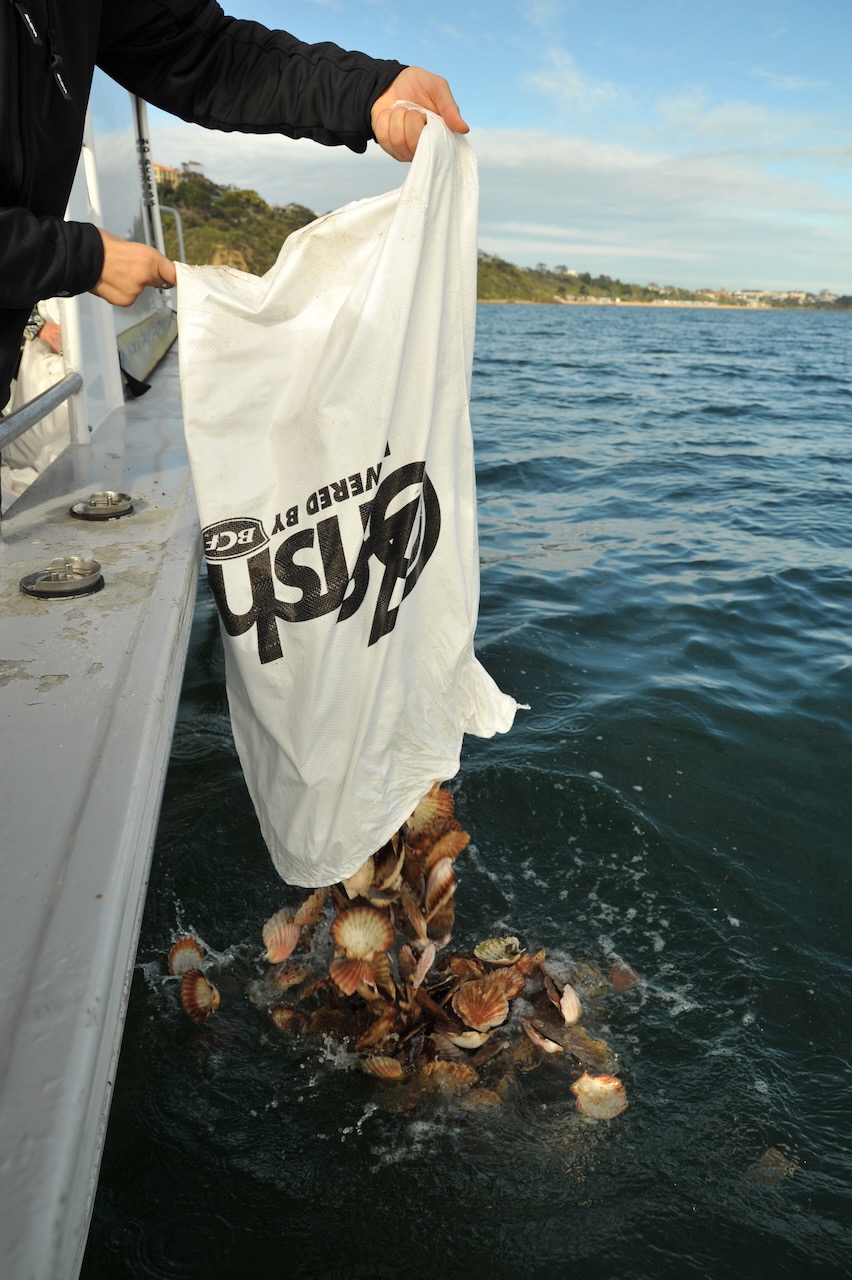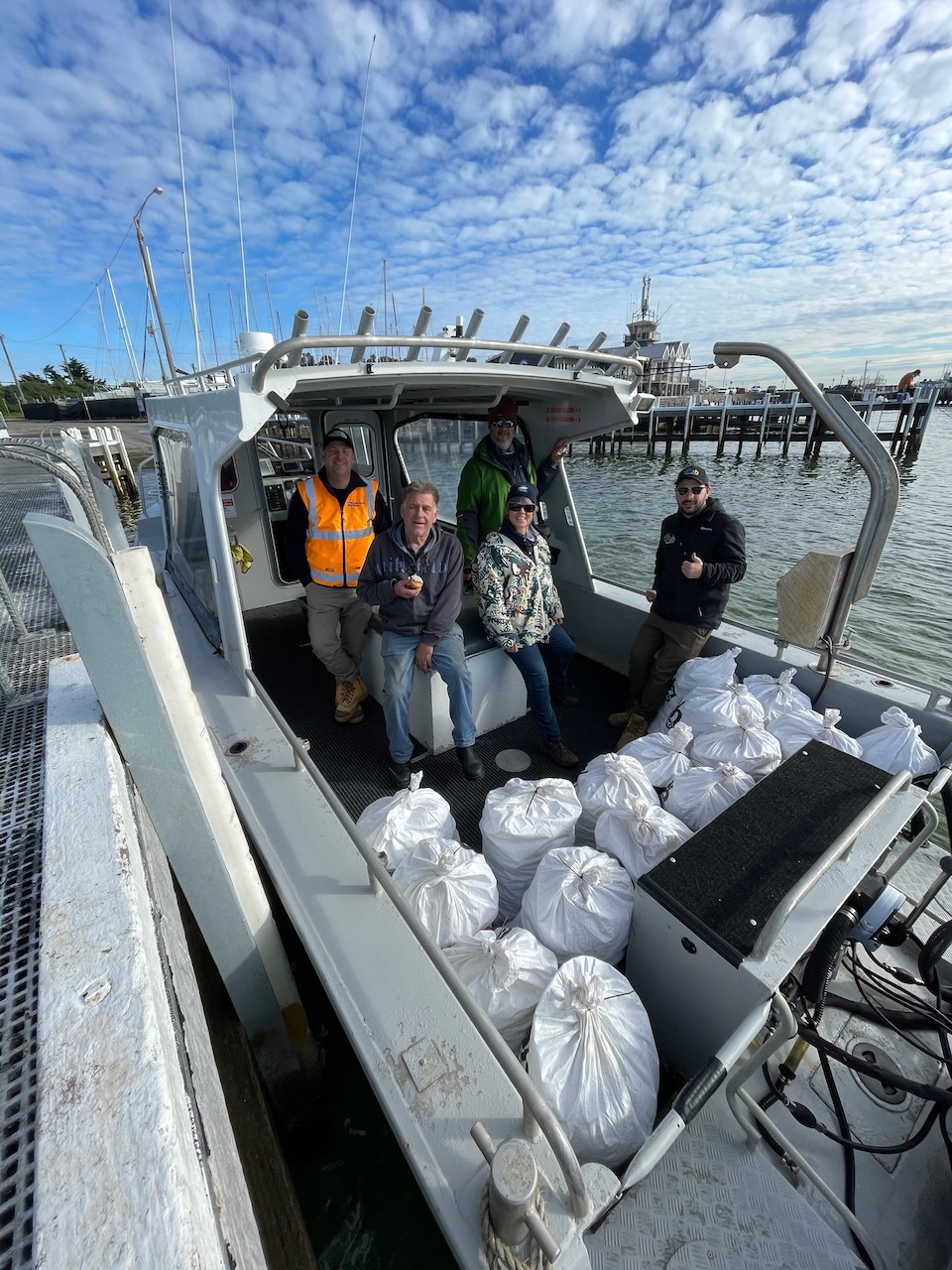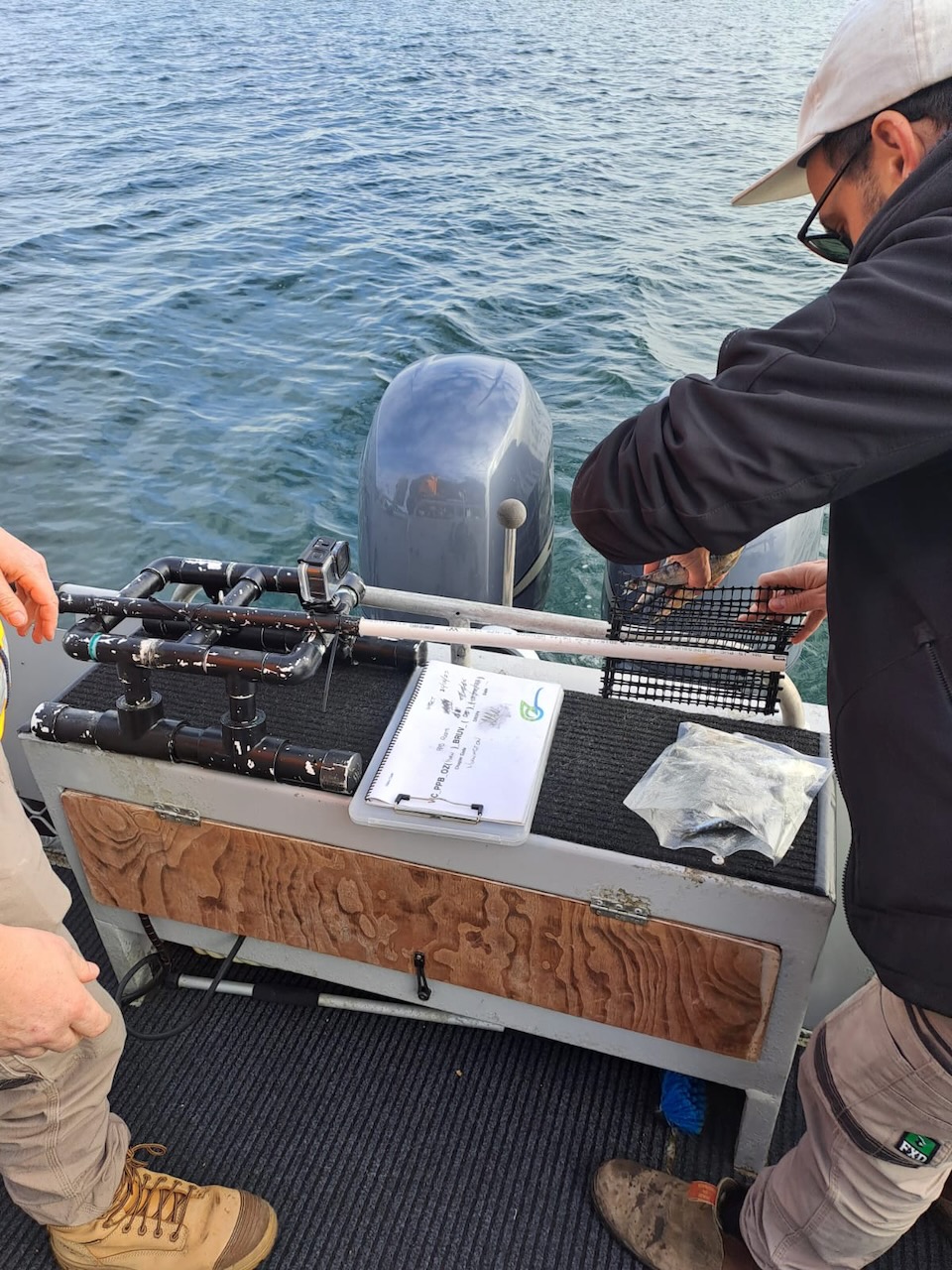Shucked seashells chucked by the seashore in Port Phillip Bay

OzFish Shellfish reef restoration finally kicked off in Port Phillip Bay last week, as part of the Port Phillip Community Reefs Project, with over 1 tonne of recycled scallop shells deployed to our reef site off Mornington on the peninsula.
Working within wintery weather windows, a small team of rec-fishers headed out on the water to help establish the base of our reef structure.
Building on the fantastic large-scale shellfish restoration efforts already underway in Port Phillip, this project focuses on a smaller-scale, community-driven approach, with fishers rolling up their sleeves and helping to deploy reef substrate, monitor restoration progress and highlight rec fishers’ capabilities.
Using recycled scallop shell sourced through The Nature Conservancy’s “Shuck Don’t Chuck” program, this site is a long-term restoration site and over time, will coalesce together to establish a reef base, which we will continue to build on as we work to bring back Australia’s lost shellfish reefs through our national Shellfish Revolution program.
Future shell substrate for the site sourced through our pilot shell recycling program currently in development on the peninsula at Flinders, with support from the Mornington Peninsula Shire.
The community recycling pilot will be up and running this summer.
Shells are bagged up and deployed from the surface at a specific location, dropping to the bottom to create a complex interlocking reef bed for colonising species to settle onto.
Working together with Melbourne Water, we’re hoping that this smaller approach and the direct community participation will increase the community’s awareness of the importance of shellfish reef habitats and support the great work going on nationally to bring them back from the brink.
As part of the reef build, fishers are monitoring the site undertaking Rapid Habitat Assessments with the OzFish UROV (Underwater Remote Operated Vehicle) and Baited Remote Underwater Video, or BRUVs, to capture footage of the changes in the reef’s fishy residents.
The project is supported by Melbourne Water through funding from the Australian Government’s Fisheries Habitat Restoration Program .

